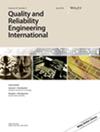分析折叠设计的解耦方法
IF 2.2
3区 工程技术
Q3 ENGINEERING, INDUSTRIAL
引用次数: 0
摘要
折叠设计通常具有吸引人的特性。其中,效果可分为两个正交子空间,一个用于奇数效果,另一个用于偶数效果。在本文中,我们介绍了一种分析折叠设计的新方法--解耦法,该方法利用了这一特性。利用镜像配对运行,创建两个新的响应,其中每个响应只受其中一个正交子空间中效应的影响。因此,奇数效应和偶数效应的分析可以分两个独立步骤进行,从而可以使用标准统计程序,并对是否存在高阶交互作用进行正式测试。该方法在 12 次普拉克特-伯曼(PB)设计的折叠真实数据上进行了演示,并通过模拟研究进行了进一步评估,在模拟研究中,去耦方法与现有的分析方法进行了比较。为了全面了解该方法的特性,我们同时使用了 PB 设计和 OMARS 设计,并考虑了不同的设计规模和遗传情况。该方法特别适用于筛选,因为它能产生很高的检测活性效应的能力。本文章由计算机程序翻译,如有差异,请以英文原文为准。
A decoupling method for analyzing foldover designs
Foldover designs often have attractive properties. Among these is that the effects can be divided into two orthogonal subspaces, one for odd effects and one for even effects. In this paper, we introduce a new method for analyzing foldover designs called the decoupling method that exploits this trait. Utilizing mirror image pair runs, two new responses are created, where each of them is only affected by effects in one of the orthogonal subspaces. Thereby the analysis of odd and even effects can be performed in two independent steps, enabling use of standard statistical procedures and formal testing of the presence of higher‐order interactions. The method is demonstrated on real data from a foldover of a 12‐run Plackett‐Burman (PB) design, and further evaluated through a simulation study, in which the decoupling method is compared to existing analysis methods. To get a thorough understanding of the properties, both a PB design and an OMARS design are used, and different design sizes and heredity scenarios considered. The method is especially suited for screening, as it yields high power for detecting the active effects.
求助全文
通过发布文献求助,成功后即可免费获取论文全文。
去求助
来源期刊
CiteScore
4.90
自引率
21.70%
发文量
181
审稿时长
6 months
期刊介绍:
Quality and Reliability Engineering International is a journal devoted to practical engineering aspects of quality and reliability. A refereed technical journal published eight times per year, it covers the development and practical application of existing theoretical methods, research and industrial practices. Articles in the journal will be concerned with case studies, tutorial-type reviews and also with applications of new or well-known theory to the solution of actual quality and reliability problems in engineering.
Papers describing the use of mathematical and statistical tools to solve real life industrial problems are encouraged, provided that the emphasis is placed on practical applications and demonstrated case studies.
The scope of the journal is intended to include components, physics of failure, equipment and systems from the fields of electronic, electrical, mechanical and systems engineering. The areas of communications, aerospace, automotive, railways, shipboard equipment, control engineering and consumer products are all covered by the journal.
Quality and reliability of hardware as well as software are covered. Papers on software engineering and its impact on product quality and reliability are encouraged. The journal will also cover the management of quality and reliability in the engineering industry.
Special issues on a variety of key topics are published every year and contribute to the enhancement of Quality and Reliability Engineering International as a major reference in its field.

 求助内容:
求助内容: 应助结果提醒方式:
应助结果提醒方式:


